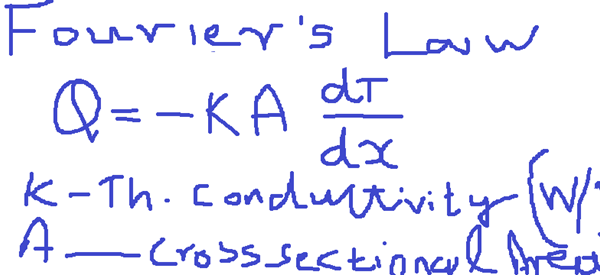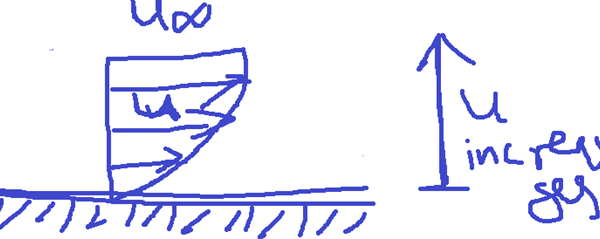
Heat and Mass Transfer
Modes of Heat Transfer
The modes of heat transfer can be divided in to the following
- Conduction
- Convection
- Radiation
- Heat Transfer by Conduction
In this mode of Heat Transfer, heat is transferred from hot region to cold region without the movement of molecules or atoms, transferring heat energy through vibrations of the molecules.
Fourier’s Law to one dimensional heat transfer for heat conduction can be given as below,

Also

Thermal circuit for a simple system where, Heat Energy flow is as below.
Where 1/k is the Thermal resistance (K – Thermal conductivity).

- Heat Transfer by Convection
Heat transfer due to the movement of fluid particles is called convective heat transfer.
Newton’s law of cooling , q = h A( Ts – T ) T infinity
h – Convective heat transfer coefft.
A – Surface area in contact with the Fluid
Ts – Boundary Temperature ( Ts)

As you go away from the boundary layer, the temp decreases ,But the fluid velocity increase ,if you go away from the boundary layer.

As we go away from the boundary layer ,fluid velocity increases.
Convective heat transfer coefft can be found out by finding the following
- Fluid properties T and P
- Geometry of surface
- The flow pattern, Laminar or Turbulent or mixed
Convective heat transfer coefficient –h , the range values ,
For
Gases, h = 25 to 250 w/m2K
Liquids, h = 1000 to 20,000 w/m2K
- Radiation Heat Transfer
Heat transfer by radiation can be in vacuum. In radiative heat transfer, heat transfer occurs , without the medium. Stefan Boltzman’s Law or radiation rate equation can be given as below, ( For Black Body)

5.69 x 10-8 w/m2K4 ( Stefan Boltzman’s constant)
If it is a Non-black body,

0 <_ Surface emissivity (Epsilon) <_ 1
The radiative heat transfer between a small object and the walls of a large body can be given as below. Some heat will escape from the small object and some heat returns back from the walls of the surface.

The relation between emissivity and irradiation can be given as.


